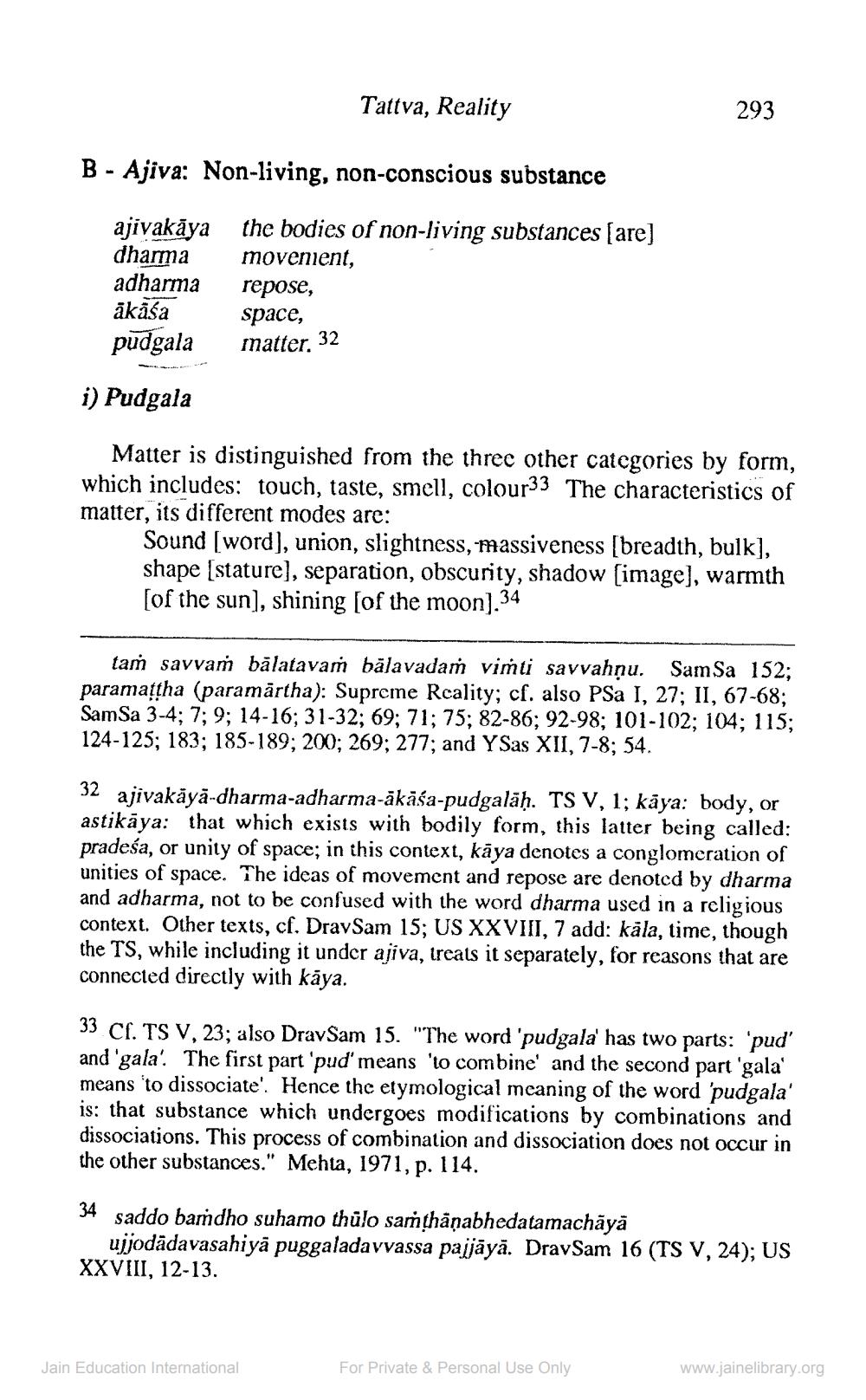________________
Tattva, Reality
293
293
B - Ajiva: Non-living, non-conscious substance
ajivakāya dharma adharma ākāśa pudgala
the bodies of non-living substances (are] movenient, repose, space, matter. 32
i) Pudgala
Matter is distinguished from the three other categories by form, which includes: touch, taste, smell, colour33 The characteristics of matter, its different modes are:
Sound (word), union, slightness, massiveness [breadth, bulk], shape [stature], separation, obscurity, shadow [image], warmth [of the sun), shining (of the moon).34
tam savvam bălatavam bālavadam viņti savvahnu. SamSa 152; paramattha (paramärtha): Supreme Reality; cf. also PSa I, 27; II, 67-68; SamSa 3-4; 7; 9; 14-16; 31-32; 69; 71; 75; 82-86; 92-98; 101-102; 104; 115; 124-125; 183; 185-189; 200; 269; 277; and YSas XII, 7-8; 54.
32 ajivakäyā-dharma-adharma-ākāśa-pudgalāḥ. TS V, 1; kāya: body, or astikāya: that which exists with bodily form, this latter being called: pradeśa, or unity of space; in this context, kāya denotes a conglomeration of unities of space. The ideas of movement and repose are denoted by dharma and adharma, not to be confused with the word dharma used in a religious context. Other texts, cf. DravSam 15; US XXVIII, 7 add: kala, time, though the TS, while including it under ajiva, treats it separately, for reasons that are connected directly with kāya.
33 Cf. TS V, 23; also DravSam 15. "The word 'pudgala' has two parts: 'pud' and 'gala'. The first part 'pud' means 'to combine' and the second part 'gala' means 'to dissociate'. Hence the etymological meaning of the word 'pudgala' is: that substance which undergoes modifications by combinations and dissociations. This process of combination and dissociation does not occur in the other substances." Mehta, 1971, p. 114.
34 saddo baṁdho suhamo thūlo samthāṇabhedatamachāyā
ujjodādavasahiyā puggaladavvassa paijāyā. DravSam 16 (TS V, 24); US XXVIII, 12-13.
Jain Education International
For Private & Personal Use Only
www.jainelibrary.org




